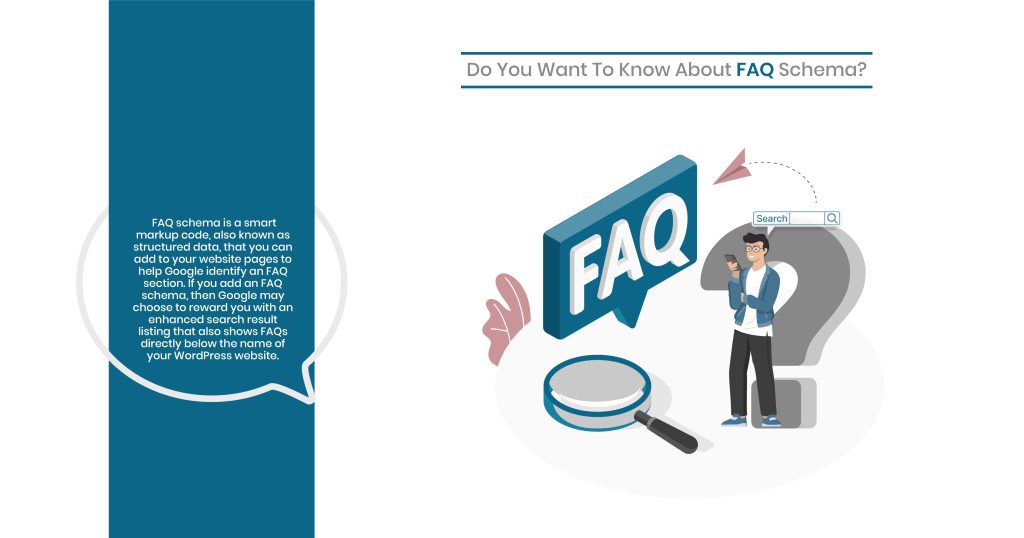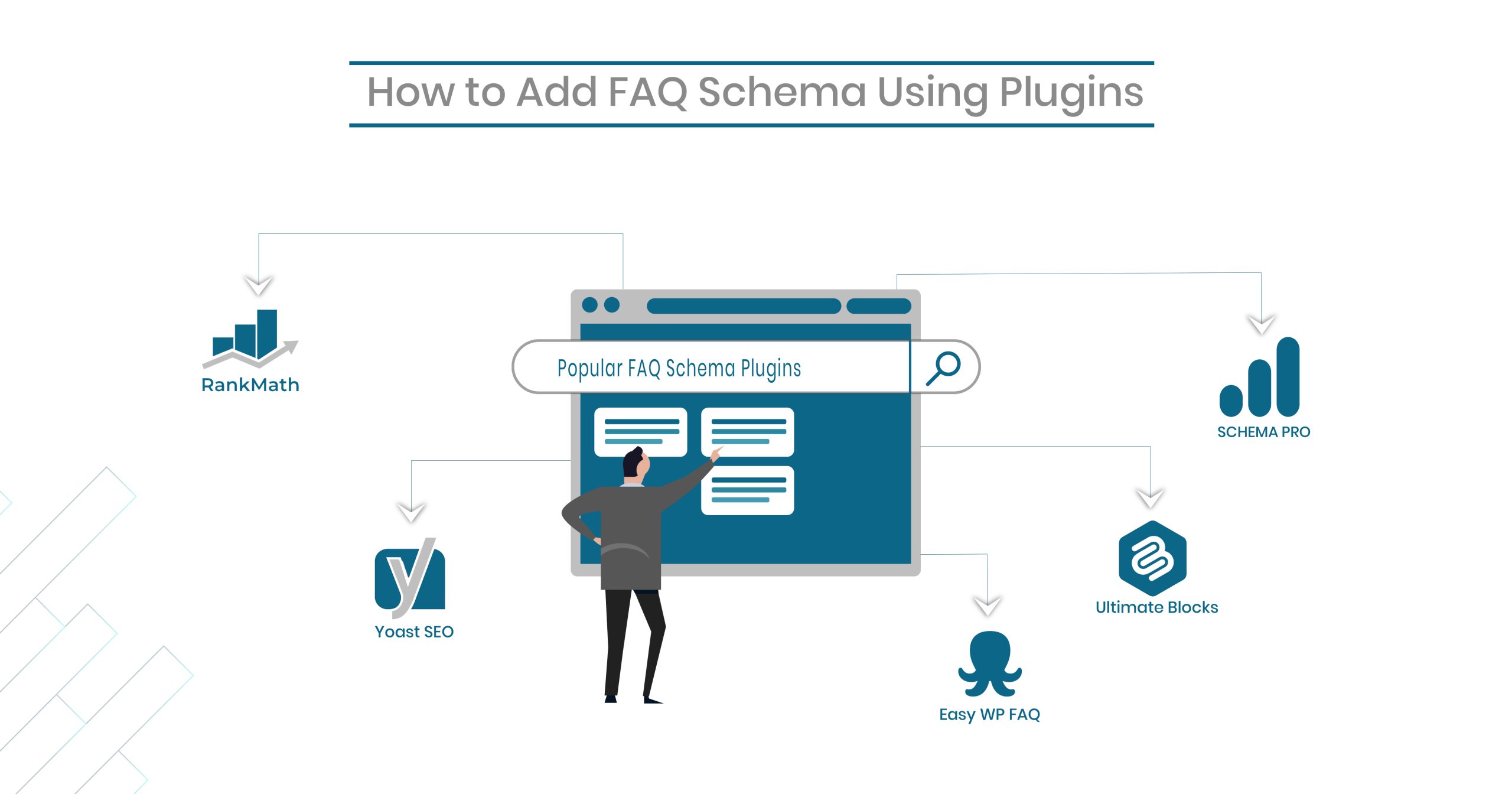Adding an FAQ section to your content is a great way to improve your SEO rankings and increase visibility in search results. By giving answers to common questions, you provide a better experience for your users and encourage them to explore more of your content. The use of FAQ schema markup allows search engines to understand your frequently asked questions and prominently display them in search results. This directly provides users with quick answers and can increase organic traffic to your website.
At WPBeginner, we add FAQ schema to appropriate posts using All in One SEO. Backlinko reports that 72.6% of pages on the first page of Google use FAQ Schema. Our WebsCare team also researched other methods to help you choose the one that best suits your website. In this article, we will show you how to add FAQ schema in WordPress and improve your rankings, step by step, leading to richer search results and increased engagement from users seeking specific answers.
Are you looking for reliable web hosting services? Contact us today to find the perfect hosting solution for your website!
What Is FAQ Schema?
The FAQ schema is a smart markup code, also known as structured data, that you can add to your website pages to help Google identify an FAQ section. If you add an FAQ schema, then Google may choose to reward you with an enhanced search result listing that also shows FAQs directly below the name of your WordPress website. For example, imagine a website with a dedicated FAQ page about a particular product. Using FAQ Schema, the questions and answers from that page could be displayed as a series of drop-downs or accordion-style answers in the SERP. This allows users to quickly see if the page addresses their specific question without having to visit the website itself. In essence, FAQ Schema is a powerful tool for improving user experience and SEO on websites that feature frequently asked questions.
Popular FAQ Schema Plugins for WordPress
When it comes to adding FAQ schema to your WordPress site, there are several plugins that make the process simple and code-free. These plugins not only help you display FAQs in an organized manner but also automatically add the necessary schema markup so that search engines like Google can recognize and display your FAQs as rich results. Below is a table outlining some of the most popular FAQ schema plugins for WordPress, their features and what makes them stand out:
| Plugin Name | Type | Key Features | Best For |
| Rank Math SEO | All-in-one SEO Plugin | Built-in FAQ block with automatic schema, Lightweight and fast | Users looking for a powerful, free SEO suite |
| Yoast SEO | SEO Plugin with Blocks | Dedicated FAQ block, automatically adds structured data | Beginners using the Gutenberg editor |
| Schema Pro | Premium Schema Plugin | Supports multiple schema types and FAQ schema setup for any page builder | Advanced users needing flexible schema support |
| Ultimate Blocks | Gutenberg Block Plugin | Includes FAQ block with schema, User-friendly and free | Bloggers and content creators using Gutenberg |
| Easy WP FAQ | FAQ Management Plugin | Designed for creating FAQs, supports schema (check version) | Websites with large or dynamic FAQ sections |
Adding FAQ Schema Using Plugins: A Step-by-Step Guide
The most straightforward way to add FAQ schema to your WordPress website is by using a dedicated plugin. Several excellent options are available, each with its own set of features and ease of use. Here are some steps that apply to most reputable FAQ schema plugins:

1. Choose and Install a Plugin
First of all, navigate to the “Plugins” section in your WordPress dashboard and click “Add New.”
Search for terms like “FAQ schema,” “structured data,” or specific plugin names if you have a preference (e.g., “Rank Math,” “Yoast SEO,” “Schema Pro”).
Browse the search results, paying attention to the plugin’s ratings, reviews, and last updated date.
Once you find a suitable plugin, click “Install Now” and then “Activate.”
What are the best free web hosting services available for users in Pakistan? Let’s read more about it.
2. Locate the FAQ Schema Feature:
Once you have installed and activated a plugin, you will need to find the section where you can add the FAQ schema. This usually varies depending on the plugin:
Within the Post/Page Editor
Some plugins integrate directly into the WordPress block editor (Gutenberg) or the classic editor. You might find a dedicated “FAQ” block or a schema settings panel within the editor.
Dedicated Schema Settings
Other plugins might have a separate section in the WordPress admin menu where you can configure schema markup for different post types or individual pages.
3. Add Your FAQs and Answers
Once you have found the FAQ schema feature, you will typically be presented with an interface to add your questions and their corresponding answers. This usually involves:
- Adding a Question: A field to input the question you want to display.
- Adding an Answer: A field (often a WYSIWYG editor) to provide a detailed answer to the question.
- Adding More Questions: An option to add multiple question-and-answer pairs.
You might see something like a button that says “Add New FAQ Item.” Clicking it would reveal fields for “Question” and “Answer.” You would then fill in these fields for each FAQ you want to include on the page.
4. Configure Display Options (If Applicable)
After adding your FAQs, some FAQ plugins give you additional display settings to control how the FAQs look and behave on your website. These options help improve user experience and match the FAQ section with your website’s design. Common display options include:
| Styling | Choosing different styles or layouts for the FAQ section (e.g., accordion, list). |
| Toggle Behavior | Configuring whether the answers are initially expanded or collapsed. |
5. Save and Update Your Page/Post
Once you have added your FAQs and adjusted the display settings (like choosing the layout style or toggle behavior), it is important to save or update the page or post where you added the FAQ section. This step ensures that all the changes you made are properly stored and reflected on the live website. If you forget to do this, your new FAQ content or any styling preferences may not appear when users visit the page.
6. Test Your FAQ Schema
It is very important to test if your FAQ schema has been implemented correctly. You can use Google’s Rich Results Test tool for this:
• Go to the Google Rich Results Test.
• Enter the URL of the page where you added the FAQ schema.
• Click “Test URL.”
The tool will analyze the page and tell you if any valid rich results including FAQ, were detected. If there are errors, you must go back to your plugin settings and make the necessary corrections.
Tips for Effective FAQ Schema
Here are some expert tips to ensure your FAQ schema is both effective and compliant with search engine guidelines:
| Avoid Duplicate Content | Do not copy FAQs from other websites. Google prefers original content, and duplicate text may cause penalties or your schema to be ignored. |
| Keep it Relevant | Ensure your FAQs genuinely assist readers and align with the page content. Use simple, clear language for better understanding by users and search engines. |
| Don’t Keyword-Stuff | Avoid overusing keywords in questions and answers. Use them naturally and sparingly to comply with Google’s guidelines and maintain a natural tone. |
| Test Your Schema | Use Google’s Rich Results Test tool to verify your FAQ schema is valid and correctly implemented before publishing. |
What are the essential tips for choosing the right WordPress hosting for a Pakistani business? Let’s read more about it.
Conclusion
Adding FAQ schema to your website is a powerful way to enhance your search presence and provide valuable information to potential visitors directly in the search results. Adding FAQ Schema using plugins is a simple yet powerful way to boost SEO and improve user engagement. Whether you use Rank Math, Yoast SEO or Schema Pro, structured data helps search engines better understand and display your content. By choosing the right plugin and following the steps outlined in this article, you can effectively implement FAQ schema and reap its SEO benefits. Remember to always test your implementation to ensure it’s working correctly and adhere to Google’s guidelines for structured data. Start using the power of FAQ schema today and watch your website gain better visibility and engagement.


